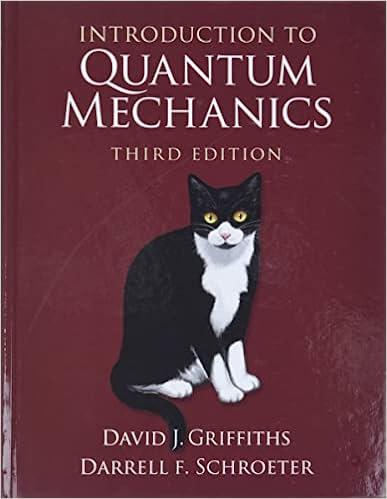In this problem we develop time-dependent perturbation theory for a multi-level system, starting with the generalization of
Question:
In this problem we develop time-dependent perturbation theory for a multi-level system, starting with the generalization of Equations 11.5 and 11.6:
![]()
At time t = 0 we turn on a perturbation H' (t), so that the total Hamiltonian is
![]()
(a) Generalize Equation 11.10 to read

and show that

where

(b) If the system starts out in the state ΨN, show that (in first-order perturbation theory)

and

(c) For example, suppose Ĥ' is constant (except that it was turned on at t = 0, and switched off again at some later time . Find the probability of transition from state N to state M (M ≠ N), as a function of T.

(d) Now suppose Ĥ' is a sinusoidal function of time: Ĥ' = V cos(ωt). Making the usual assumptions, show that transitions occur only to states with energy EM = EN ± ћω, and the transition probability is

(e) Suppose a multi-level system is immersed in incoherent electromagnetic radiation. Using Section 11.2.3 as a guide, show that the transition rate for stimulated emission is given by the same formula (Equation 11.54) as for a two-level system.
![]()
![]()
![]()

Step by Step Answer:

Introduction To Quantum Mechanics
ISBN: 9781107189638
3rd Edition
Authors: David J. Griffiths, Darrell F. Schroeter





